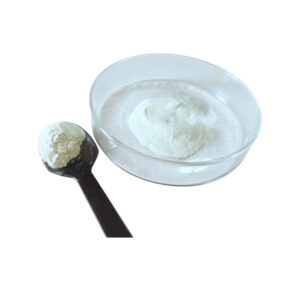Description
Technical Specifications
| Property | Specification |
|---|---|
| Chemical Name | Sodium Bisulfite |
| Chemical Formula | NaHSO₃ |
| CAS Number | 7631-90-5 |
| Appearance | White to yellowish crystalline powder |
| Purity | ≥ 98% (industrial grade) |
| Molecular Weight | 104.06 g/mol |
| Solubility | Highly soluble in water |
| Density | 1.48 g/cm³ |
| pH (1% solution) | Approximately 4.0 – 5.5 |
| Packaging | 25 kg or 50 kg plastic-lined bags/drums |
| Storage | Store in a cool, dry, well-ventilated area away from heat and moisture |
Applications of Sodium Bisulfite
💧 1. Water Treatment
Sodium Bisulfite is widely used to remove residual chlorine and neutralize chlorinated water in municipal water treatment plants and wastewater systems. It helps in:
-
Dechlorination of drinking water
-
Effluent treatment in industrial discharges
-
Boiler feedwater conditioning
🍴 2. Food Preservation
In the food industry, it serves as a preservative and antioxidant, particularly for:
-
Preventing browning in fruits and vegetables
-
Extending shelf life of canned and frozen foods
-
Inhibiting bacterial growth in beverages and syrups
Note: Food-grade Sodium Bisulfite must meet strict purity standards.
🏭 3. Industrial Uses
Sodium Bisulfite is vital in:
-
Paper and pulp bleaching processes
-
Textile dyeing and finishing
-
Leather processing
-
Chemical synthesis, such as the reduction of aldehydes and ketones
🌿 4. Environmental Protection
Its reducing properties make it ideal for removing heavy metals, neutralizing toxic gases (like chromates and formaldehyde), and managing air emissions in various industries.
Advantages of Using Sodium Bisulfite
-
✅ Highly effective reducing agent
-
✅ Water-soluble and easy to apply
-
✅ Versatile usage across multiple industries
-
✅ Cost-effective with high efficiency
-
✅ Environmentally useful for pollutant neutralization
Storage and Safety Guidelines
-
Store in sealed containers to prevent moisture absorption
-
Avoid contact with strong acids, which can release toxic SO₂ gas
-
Use personal protective equipment (PPE) when handling
-
In case of spills, ventilate area and clean with water
-
Dispose of in accordance with local environmental regulations
Conclusion
Sodium Bisulfite (BS) is an indispensable chemical known for its versatile functionality and cost-efficiency. From industrial dechlorination and food preservation to pollution control, its widespread application makes it a critical compound in modern processes. With its powerful reducing capabilities and environmental significance, Sodium Bisulfite remains a trusted and reliable choice for industries seeking performance and compliance.





